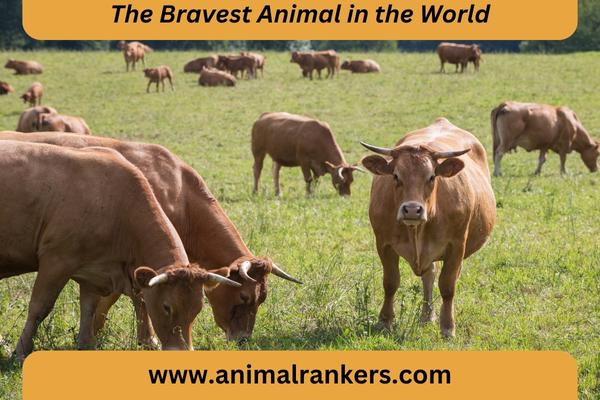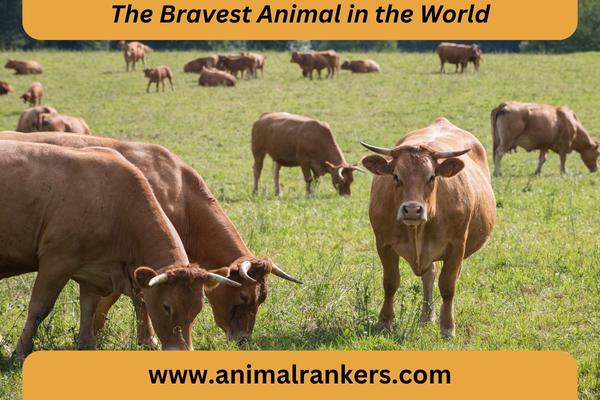Limousin Cattle: A Complete Breed Guide
Limousin cattle are a popular beef cattle breed known for their excellent muscle tone and high-quality meat. Originating in the Limousin region of France, these cattle have become one of the most widespread beef breeds worldwide.
In this blog article, we will provide a comprehensive overview of the limousin cattle breed covering its history, characteristics, uses, and advantages.
Limousin Cattle origins
The Limousin breed originated in the French regions of Limousin and Marche in the west and central areas of France. These regions have undulating hills, plateaus, and mountainous terrain with a cool, moist climate.
The landscape and climate of this area allowed native Garonnais, Quercy, and Aubrac cattle to adapt and develop into hardy, rugged animals that could thrive under less-than-ideal conditions.
Over several centuries, local farmers selectively bred their best cattle for traits like fertility, docility, foraging ability, disease resistance, and meat production. This culminated in the evolution of the limousin breed that we recognize today.
Some key points about limousin cattle origins:
- They descended from ancient French breeds like Garonnais, Quercy, and Aubrac that inhabited the Limousin regions of France.
- The cool, hilly terrain and abundant grasslands helped shape the breed’s characteristics over time.
- Strict selection by farmers and breeders concentrated the best traits in the emerging limousin cattle.
- The breed was officially established and named after the Limousin regions by the 19th century.
- Rigorous record-keeping and controlled breeding helped maintain the purity of the Limousin breed in France over the centuries.
- Exports of limousin cattle from France in the 1960s spread the breed worldwide where it thrived under various conditions.
The origins of the limousin cattle breed can be traced back to the indigenous cattle populations of west and central France which were refined over many generations into the modern limousin breed we know today. The landscape and selective breeding were key factors in the development of this premier French beef breed.

limousin cattle Key Characteristics
- Coat Color: Limousin cattle have a distinctive red coat color that can range from light wheaten to darker chestnut shades. The color is the result of light pigmentation in the skin and hair. Calves are born with a lighter golden-red hair coat that darkens as they mature.
- Muscling: Limousins are renowned for their heavy muscling and trim, well-defined muscle shape. They naturally develop excellent muscle volume and definition throughout the body, especially on the topline, hindquarters, and rump.
- Body Type: These cattle have a medium-sized but compact frame and sleek profile. Despite their substantial muscling, they are not excessively large or coarse. Cows average around 5 feet tall while bulls stand about 6 feet tall at maturity.
- Head & Horns: The head is short, broad and typically free of excess tissue. Bulls have upward-sweeping horns that curve slightly forward. In contrast, cows tend to be polled (naturally hornless).
- Temperament: Limousins have an even, docile temperament. They are intelligent, alert and respond well to handling. The cows make attentive mothers and produce adequate milk to rear calves.
Limousin cattle Uses
- Breeding: Well-bred registered limousins are used to produce purebred seed stock for sale to other limousin breeders and commercial beef producers. Strict performance testing ensures quality genetics.
- Crossbreeding: Limousin bulls are commonly mated with British breed cows to produce crossbred calves that benefit from hybrid vigor. The limousin contributes lean muscle, while British breeds provide marbling.
- Feedlots: Commercial feedlots finish limousin cattle to produce lean, well-muscled carcasses. The cattle efficiently convert feed into lean beef that meets market demand.
- Shows: At cattle shows, limousins are exhibited and judged according to breed standards for muscling, structure, balance, and other physical qualities. Superior animals can become more valuable breeding stock.
Limousins are prized for structural correctness, high-cut muscling, docility, and feed efficiency across various roles in the beef industry.

Limousin Cattle Facts:
- Oldest French Beef Breed – Limousins are the oldest French beef cattle breed. All current French beef breeds contain limousin genetics.
- High Dressing Percentage – Limousin carcasses can yield over 65% of the live weight in saleable meat cuts, surpassing other breeds.
- Naturally Hornless Cows – Approximately 15% of limousin cows are naturally polled (hornless). The horned gene is recessive in limousin females.
- Premium Exports – France exports large numbers of purebred Limousin breeding stock which commands high prices internationally due to genetics.
- Lean Meat – Limousin beef contains an average 2-3% fat content, 50% less than other breeds. This makes it lower in cholesterol.
Some potential disadvantages to consider are marbling ability, calving size, and aggression in bulls. But limousins also boast some very impressive facts and attributes as one of the top global beef breeds.
Advantages of Limousin Cattle
Some of the advantageous characteristics that make limousin cattle highly suitable for beef production include:
- Lean carcasses – Limousin cattle have very low subcutaneous fat levels and produce exceptionally lean and well-muscled carcasses. This meets rising consumer demand for healthier low-fat beef.
- Feed efficiency – They have excellent feed conversion rates, requiring less feed per pound of gain compared to British breeds. This makes their production more cost-efficient.
- Carcass yield – Limousin carcasses have high dressing percentages, yielding more pounds of retail cuts from each animal.
- Calving ease – Due to their medium frame size and maternal abilities, limousin cows experience fewer calving problems and have good calf survivability.
- Environmental adaptation – Limousins adapt well to temperate regions as well as hotter environments. They have good heat tolerance and can forage well on pasture.
- Docility – Their calm disposition makes limousins easier to manage than many other continental breeds.
Limousin Cattle Disadvantages:
- Tendency to Yield Less Marbling – Limousins naturally have very low levels of intramuscular fat or marbling. Additional steps may be needed to increase marbling to meet market specifications.
- Large Birth Weights – Due to their muscular build, purebred Limousin calves can have heavier birth weights that may increase calving difficulty, requiring supervision.
- Bull Aggression – Some limousin bulls can become aggressive despite the breed’s typical docility. Careful selection for temperament is necessary.
- Susceptibility to Pinkeye – Limousins appear to have a genetic predisposition towards bacterial pinkeye infections which must be promptly treated.
- Climate Intolerance – The breed does not adapt well to hot, humid climates. They fare better in temperate to cool climates.
Conclusion
With their solid muscling, feed efficiency, leanness, and yield, limousin cattle offer profitable returns for beef producers. The breed continues growing in popularity worldwide while also improving the quality and profitability of crossbred commercial cattle.
Their excellent qualities position limousin cattle as one of the preeminent global beef breeds for decades to come. Learn here more about cattle breeds and types.


